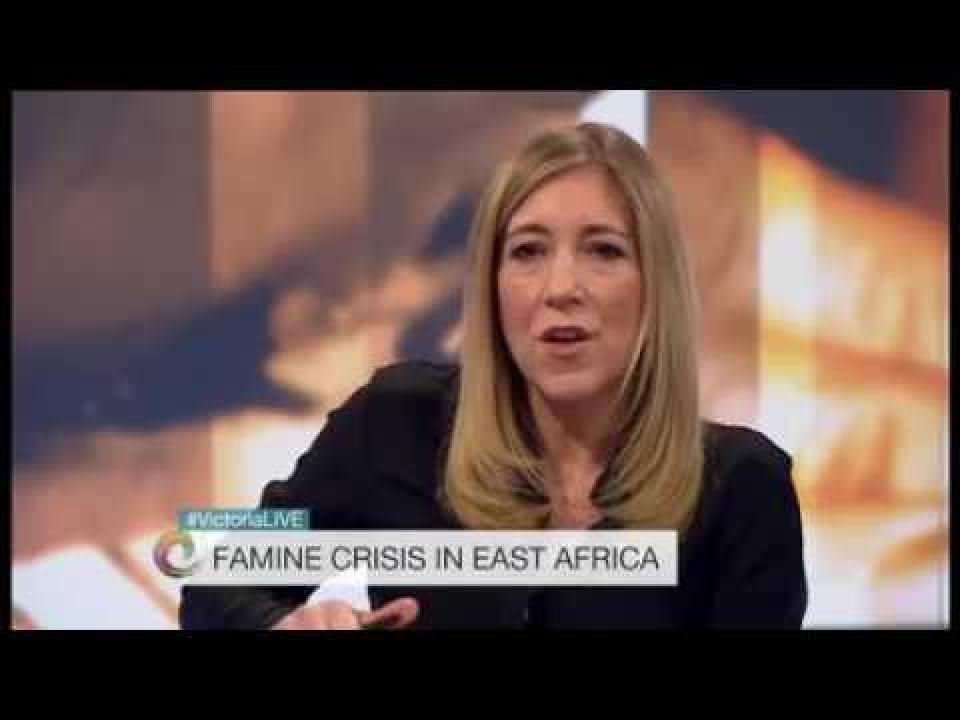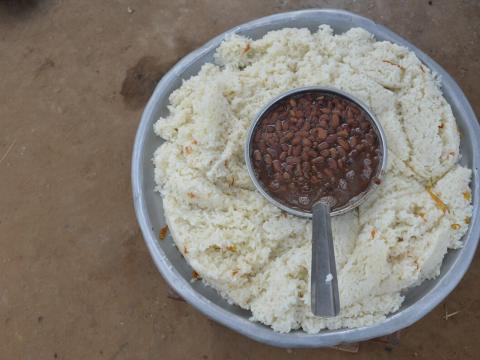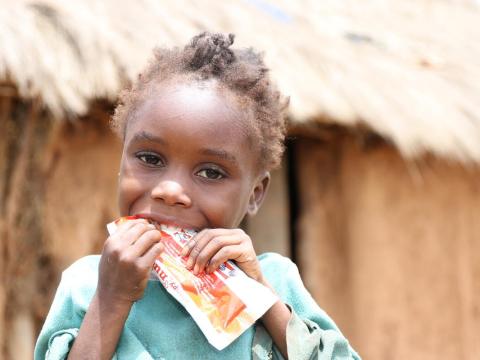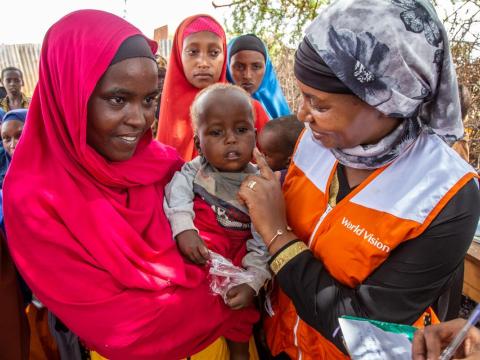
Surviving malnutrition may not be enough for Somalia's children
Mary Njeri warns that catastrophic food shortages and too little humanitarian funding means the outlook for is very bleak for millions of Somalia's children
30 January 2023
I recently visited the Bay Regional Hospital in Baidoa, Somalia where I met Abdiyow, a 34-year-old mother of seven children. Her 8-month-old twins, Ali and Abshir, had been admitted to the Intensive Care Unit (ICU) suffering from severe acute malnutrition, the most extreme and visible form of undernutrition. Its face is a child – frail and skeletal – who requires urgent treatment to survive. Children with severe acute malnutrition have very low weight for their height and severe muscle wasting. They may also have nutritional oedema – characterised by swollen feet, face, and limbs. It is a major cause of death in children under 5, and its prevention and treatment are critical to child survival and development.
Which is naturally why, as an experienced mother, Abdiyow became very concerned with the twins' growth and development, or lack thereof. Normally, an 8-month-old would be sitting up on their own and crawling. However, due to malnutrition, Ali and Abshir appeared as if they are just were a few weeks old. They were so thin and weak, and appeared so fragile, that one might be afraid to pick them up to cuddle them.
What Abdiyow likely expected to be a quick check-up had turned into an eight-day ordeal, which, according to the babies’ doctor, would continue until her children were stable enough to leave and begin receiving out-patient care. This delay isn’t just affecting the twins, it has an impact on the entire family. Abdiyow’s 12-year-old son is missing school to help his mom care for his brothers at the hospital while her husband stays home, not earning, to care for their other four children.
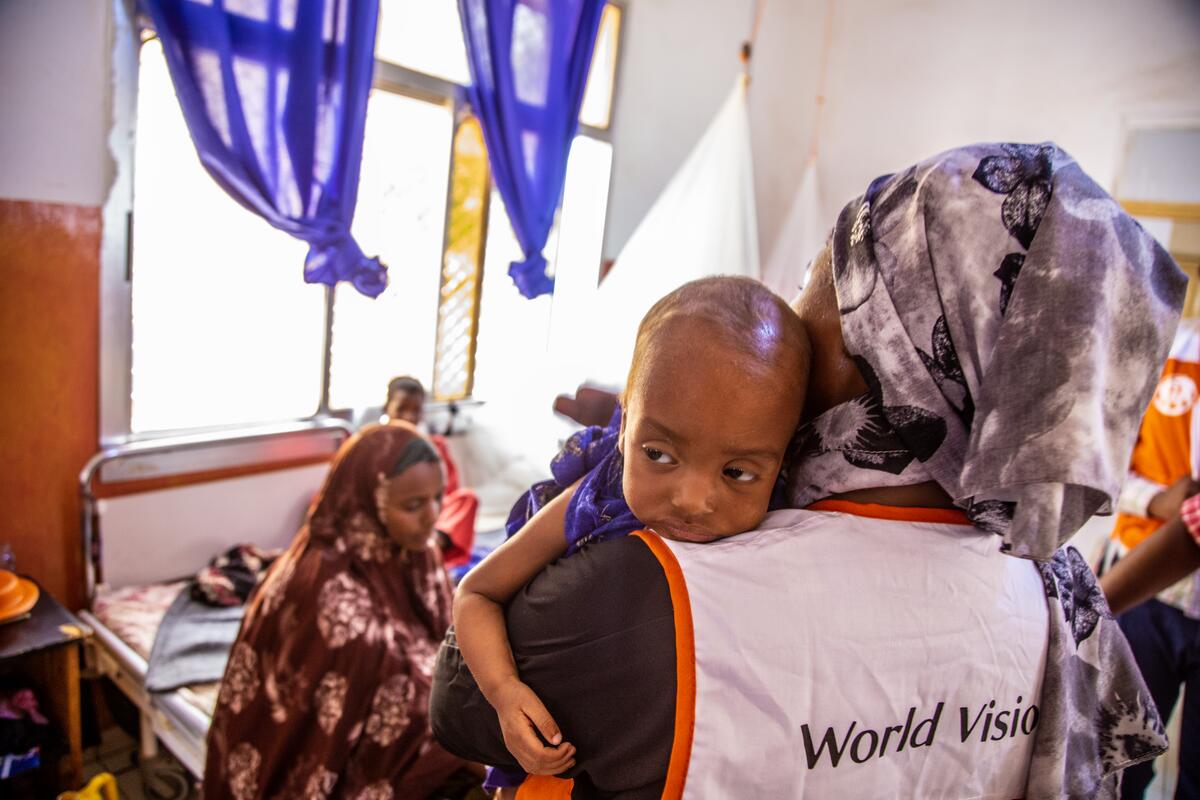
Credit: Gwayi Patrick, World Vision
Unfortunately, this is not an isolated case; surrounding Abdiyow are dozens of other mothers with equally sick children. The month before my visit the ICU unit was completely full. During my visit, the number of patients in this grim and sombre ICU unit hovered around 60 percent. Unfortunately, the doctor in charge didn’t believe that this drop was indicative of an improvement in children’s health. Rather it was thought that recent rains had affected the roads preventing many families from accessing the hospital and denying children suffering from acute malnutrition life-saving treatments.
One in nine Somalis (an estimated 1.7 million) – half of whom are children – are already living in ‘emergency’ or ‘catastrophic famine--like’ malnutrition levels and mortality rates (IPC 4 and 5).
A staggering 1.8 million children across Somalia are expected to face the risk of acute malnutrition by mid-2023.
However, with acute malnutrition more than half of Somali children expected to suffer from acute malnutrition at some point between July 2022 and June 2023, I am afraid that if this situation is not treated in a way that addresses the underlying factors driving this issue, these children will end up stunted, which will, in turn, affect their mental development, lead to poor school performance and reduced intellectual capacity. This will eventually affect economic productivity, and the poverty cycle will continue.
This encounter with Abdiyow evoked my maternal instincts yet left me feeling helpless as there was little I could do to help her or her tiny twins who were clearly in pain. My mind went quickly to my own children at home in Kenya, and I thought about how hard I would fight to see them live if I was in Abdiyow’s position. No mother should be sitting by the bedside feeling helpless at the thought of losing their child to the entirely preventable condition of malnutrition.
World Vision is partnering with donors to run three health facilities in Baidoa where children are screened for malnutrition and provided with outpatient therapeutic care. These medical professionals are doing their best to save the children admitted here, providing a lifeline for children who could otherwise die. World Vision also runs mobile centres which offer an assortment of health and nutrition services. This enables people living in hard-to-reach communities who often are unable to access such services due to distance or the state of the roads in their area. In 2022, World Vision’s health facilities in Baidoa screened more than 51,000 children, diagnosing and treating more than 5,000 with severe acute malnutrition and another 8,700 with moderate acute malnutrition. More than 1,600 of these children have fully recovered.
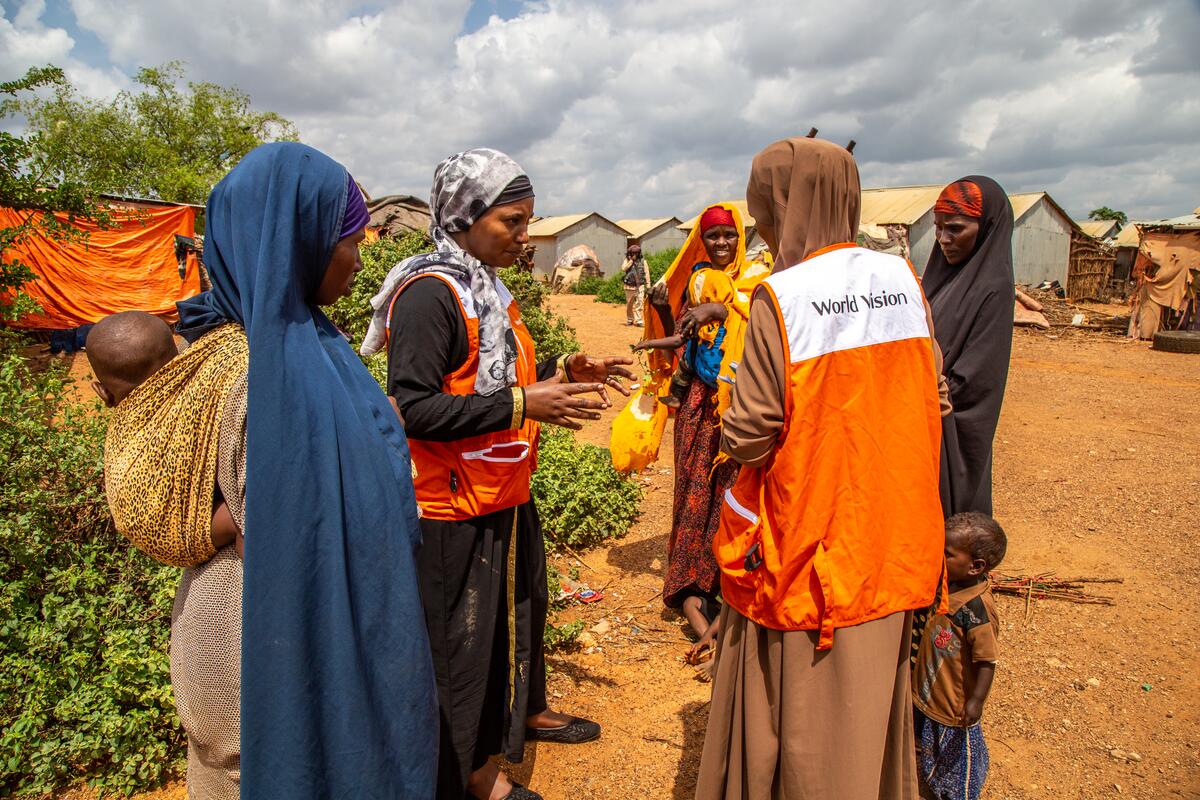
However, the need is vast and support is limited. Somalia’s children need urgent and sufficient assistance to ensure that no more children die while the international community stands by and watches. A majority of the Somali population is already facing catastrophic food shortages. The conditions over the past year have been extremely dire as both farmers and pastoralists have run out of ways to ensure their families’ survival due to the ongoing droughts killing their livestock and crops, eliminating their food sources as well as any way to earn income. Yet, the situation is set to worsen dramatically in 2023. Between April and June, the number of Somalis suffering from ‘emergency’ and ‘famine-like’ conditions are expected to double – with 1 in every 4.5 people facing starvation. A famine is also projected in Baidoa and Burhakaba districts as well as in the capital, Mogadishu – amidst an anticipated reduction in funding.
Knowing this fact, even as I am now back in Kenya and continuing with my advocacy work, I worry about the twins’ long-term ability to recover under these worsening conditions and for the children and their families living in hard-to-reach locations where they have even less access to humanitarian aid. Urgent and immediate action is needed to prevent widespread death and total collapse of livelihoods. Humanitarian agencies require ongoing support to address the underlying factors driving this situation and move the needle in Somalia; otherwise the narrative will never change and children will continue to be the ones to suffer.
Learn more about World Vision's Global Hunger Response here, and its work in Somalia here.
Mary Njeri is the award-winning director of the World Vision's Global Hunger Response. She has over a decade of experience of emergency food distribution, resource acquisition, refugee programming, and supporting communities prepare, mitigate, respond and recover from natural disasters and conflict in all parts of Kenya and Northern Uganda.
